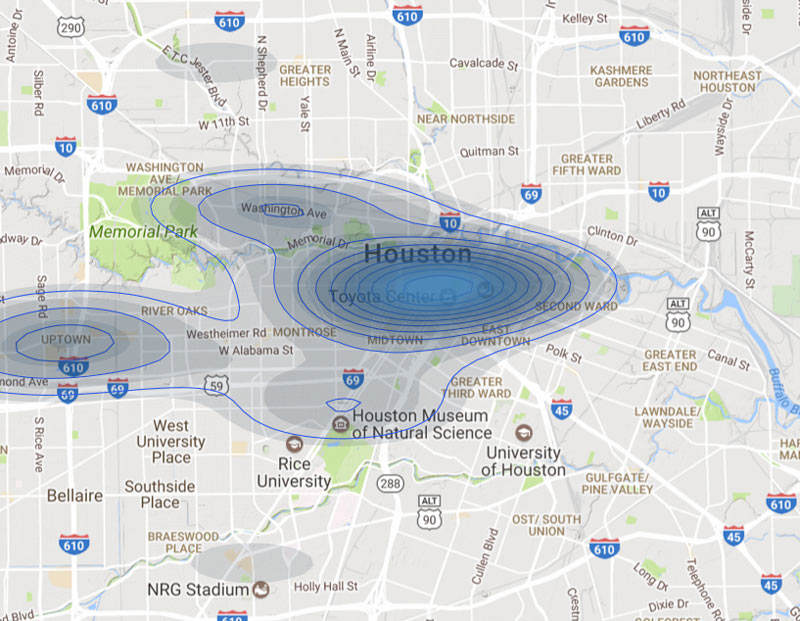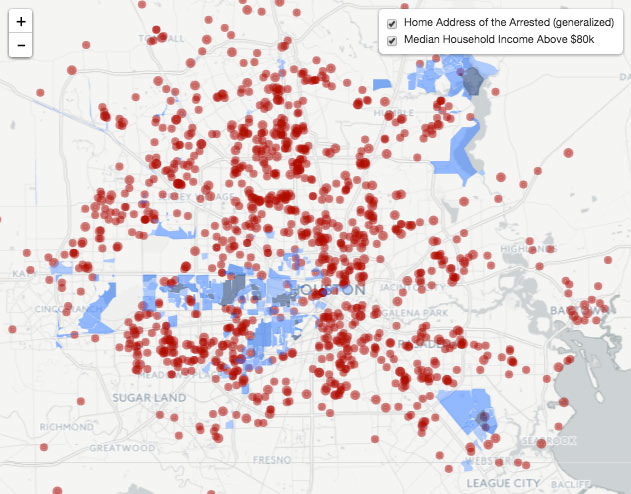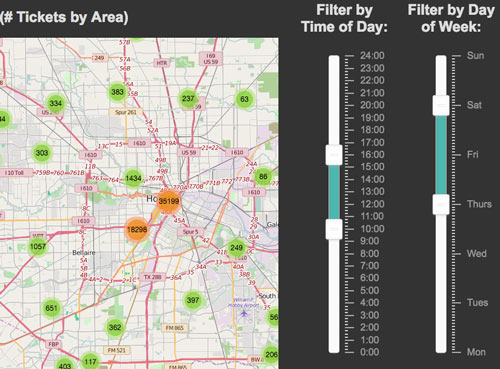It’s the most wonderful time of the year to take stock of everything that’s been ripped to shreds around town recently, so we built this tool to help you do so. The map above shows the location of every demolition permit filed with the City of Houston in 2018. Here’s a full-size version. In total 2,312 properties were tagged for demo, some of which — like, say, apartment or industrial complexes — saw multiple structures go down on their premises. Zoom in and you’ll see the clusters start to break down into individual address markers that tell you more about what went down. (Multi-building demos are indicated by the bullseye icons with multiple rings.)
Recognize any of last year’s high-profile disappearances? The Shelor Motor Company Building at 1621 Milam St., for instance? KHOU’s flooded newsroom at 1945 Allen Pkwy.? The Depression-era Harris County District Attorney’s Building at 201 Fannin, Clark Gable’s former house at 411 Hyde Park Blvd., the northeast portion of the River Oaks Shopping Center at 1958 W. Gray St., La Colombe d’Or’s ballroom at 3410 Montrose Blvd., architecture firm Caudill Rowlett Scott’s former HQ at 1177 West Loop South, Exxon Chemical’s old conference building at 13501 Katy Fwy., the mysterious Heights corner compound at 620 W. 9th St., Shake Shack’s Burger King predecessor at 1002 Westheimer, the last traces of KBR’s Fifth Ward complex at 2720 Clinton Dr., the bungalow at 610 Allston St. where Mary Cerruti — the homeowner who refused to make room for Trammell Crow’s adjacent Yale at 6th apartments — was found dead inside one of the walls?
They’re all there. This time, however, they’re sharing the spotlight with all their fellow, but significantly less fussed-over knockdowns, the kinds that form the bulk of Houston real estate turnover. For a look at where across-the-board demo activity was the most concentrated last year, take a look at our 2018 demolition heatmap:




 Amateur parking violation scrutinizer Jordan Poles has
Amateur parking violation scrutinizer Jordan Poles has